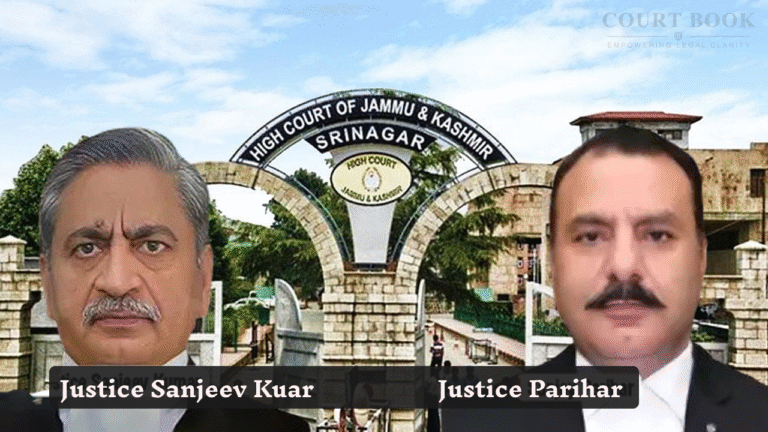The High Court of Jammu and Kashmir and Ladakh has ruled that a Ziyarat (shrine) or Dargah that qualifies as a “Wakaf by user” under Section 3(d)(i) of the Jammu & Kashmir Wakafs Act, 1978, does not need formal declaration or gazette notification to be treated as Wakaf.
"Wakaf includes religious sites like Masjid, Dargah, and Ziyarat that are used as such by the public, even without formal dedication," the Court stated.
A Division Bench of Justice Sanjeev Kumar and Justice Sanjay Parihar delivered the verdict while dismissing an appeal filed by the Intizamiya Committee and its Manager Haji Abdul Ahad Akhoon. The appeal challenged the Wakaf Board’s takeover of the shrine known as “Ziyarat Sharif Syed Khazir Sahib” in District Ganderbal.
The appellant claimed ownership of 5 kanals of land in Khasra No. 323, where he had developed shrines of Syed Jaffer, Syed Rehman, and Syed ul-Hajra. He argued that the shrine was built on private land and thus not subject to the Wakaf Board's control.
However, the Wakaf Board countered that the shrine in question was already notified as Wakaf under SRO 510 dated 11.12.1985 in Khasra No. 322 min, not 323. Since the appellant's land was not included in the official Wakaf notification, he had no legal authority to challenge the Board’s action.
The Court emphasized that “Wakaf by user” is recognized by law through its public religious function, regardless of ownership or formal documentation.
“Ziyarats and Dargahs, by their nature and use, become Wakaf. They do not require formal recognition or gazette publication,” the bench noted.
Justice Kumar also clarified that Section 4 of the Act pertains only to the survey of existing Wakafs and does not create or declare them. Section 6 only requires publishing the list of identified Wakafs, not formalizing them.
Read Also:- Kerala High Court Welcomes Kochi’s Flood-Free Monsoon, But Stresses Continued Action Against Future Risks
Importantly, the Court observed that the appellant’s claimed land in Khasra No. 323 was never notified as Wakaf, and thus he had no basis to oppose the Board's management of the notified shrine.
“The appellants have no legal right to challenge the Wakaf Board’s notification or control of Ziyarat Sharif Syed Khazir Sahib, which is not situated on their claimed land,” the Court ruled.
The Bench concluded by upholding the Wakaf Board’s authority and dismissed the appeal. It allowed the appellant to seek civil remedies if he wished to establish proprietary rights over his land, clarifying that the current judgment would not hinder that pursuit.
Case Title: Intizamia Committee Vs UT Of J&K










